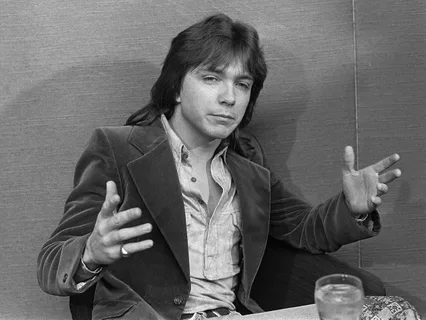
A bright, clean plea with a teenager’s dignity—David Cassidy turns “Breaking Up Is Hard to Do” into a gentle boundary set to radio sunshine.
If you lived with an AM radio glowing on the kitchen counter, you remember how this record arrived: quick, buoyant, and unashamedly tender. Though issued under The Partridge Family banner, it’s unmistakably David Cassidy at the mic, taking Neil Sedaka and Howard Greenfield’s Brill Building standard and shaping it for 1972’s airwaves. Released on Bell Records as a stand-alone single—catalog Bell 45,235—with “I’m Here, You’re Here” on the flip, the cut made a respectable U.S. showing (No. 28 on the Billboard Hot 100) and became a bigger smash abroad: No. 3 in the U.K., No. 3 in Australia, No. 11 in New Zealand, No. 18 in Canada. In the U.K., it even came as a maxi-single (“Mabel 1”), sharing a side with “I Think I Love You” and parking at No. 3 through the summer of ’72.
There’s a small semantic tidy-up worth noting for the shelf-label sticklers: on paper it’s The Partridge Family (starring Shirley Jones, featuring David Cassidy); in the ear it’s Cassidy front and center, flanked by studio pros. The record rolled into the autumn compilation At Home with Their Greatest Hits—where it appears in crisp two-and-a-half-minute trim—and, like so many Partridge sides, it carries the touch of producer Wes Farrell, with charts shaped by Mike Melvoin and the L.A. session A-team (think Hal Blaine, Larry Knechtel, Joe Osborn, Larry Carlton) giving the track that glossy ease without sanding off its feeling
The backstory goes back a decade. Sedaka’s 1962 original was an uptempo doo-wop gem (later reborn as his own torchy ballad hit in 1975), and the lyric is as plain as a kitchen-table confession: please go, before I do something I’ll regret. Cassidy doesn’t dramatize that plea; he softens it. Where Steve Lawrence’s tuxedoed 1963 No. 1 is supper-club suave, and Sedaka’s slow 1975 remake aches, Cassidy splits the difference—keeping the bounce but lowering the temperature. He rounds the vowels, sings half a step behind the beat, and lets the horns and strings lift rather than announce. It’s a teenager’s voice, yes, but with a grown person’s manners, and that politeness carries more moral weight than any showy ad-lib ever could.
The making is as satisfying as the result. Under Farrell’s steady hand, the rhythm section stays unfussy, the Melvoin charts tuck the strings and horns where they glow but don’t gloat, and the whole thing breathes at a human tempo. You can hear the Los Angeles craftsmanship in the little choices: drum brushes that sound like evening air, an electric-piano halo that warms the chorus, and stacked backgrounds that behave like friends, not a choir. The effect is a kind of sunlit restraint—radio brightness serving a lyric that asks for space without a trace of meanness.
Chart paper is only part of the life a song lives, and this one kept traveling with Cassidy. On the 1974 concert album Cassidy Live!, he leans into the crowd’s memory and turns the tune into a communal sing—proof that what began as a tidy studio confection had legs on stage. That afterlife matters because it explains why older listeners still hear something steadfast in the song. It’s not just nostalgia; it’s the memory of a pop star choosing kindness as a pose and discovering it played just fine in the big rooms.
And the meaning? Time has been kind to it. In lesser hands, “Breaking Up Is Hard to Do” can read coy. In David Cassidy’s, it’s simply polite courage—a boy saying no to the easy thrill in order to stay true. That’s why the record still hits home for ears that remember the long drive back from a date, the hush after the last chorus, the way a small decision could feel like the whole world in your throat. The production keeps faith with that feeling: no key-change fireworks, no solos muscling the vocal aside, just a steady, easy sway that lets the words land and linger.
Placed amid the Bell Records arc—where Cassidy and Farrell proved, again and again, that pop could be both clean and human—this single stands as a modest masterclass. It honors the Brill Building bones, dresses them in 1972 sunlight, and trusts a young singer’s sincerity to carry the weight. Spin it today and you’ll hear why it lasted: not because it shouted the house down, but because it left the room warmer than it found it. That’s a rarer trick than it sounds, and David Cassidy makes it feel as natural as breathing.
Thank you for these articles on David Cassidy;David’s records are the first ones I bought while living in France. i always was trying to translate the lyrics. He was so underrated even I then could tell.